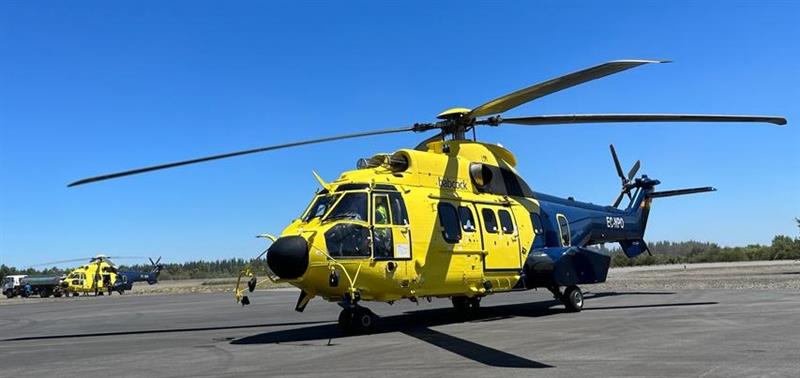Super Puma helicopters to help firefighting operations in Chile

Ecocopter and Babcock will operate the aircraft
Two Super Puma AS332 helicopters from Europe are being added to the aircraft on alert to fight fires predominantly in the central-southern area of Chile.
According to daily figures from CONAF (Corporación Nacional Forestal – The National Forest Corporation), during the 2022–2023 season there have been nearly 2,700 forest fires, with more than 47,000 hectares being affected in Chile. The two Super Pumas have landed in the country to aid the firefighting efforts.
Chilean Ecocopter and Babcock are in charge of operating the aircraft working in the Biobío and Araucanía Regions to help extinguish the fires.
Mauricio Neira, Ecocopter's Forestry Manager, said: “The presence of the Super Puma in Chile is a guarantee and an example of how the forestry industry is taking the necessary measures to prevent these types of catastrophes from spreading and can be controlled with fast, efficient and safe aircraft, through world-class expert crews.”
A Super Puma helicopter is capable of dropping up to 3,500L of water and can carry 16 firefighters. These features enable it to meet the demands of the forest fire season in the semi-heavy helicopter category.
It also has a flight time of up to three hours and a complete system for firefighting, with a helibucket for water loading. Through this mechanism, the Super Puma can load its main tank, landing on a water source in a few seconds and allowing launches in different modes, from partial launches to full discharge in six seconds.
Jose Gil, Pilot and Head of Firefighting Operations at Babcock, explained: “Its qualities allow a large volume of water attack, fast and effective in firefighting, thus facilitating the work of the brigades. Additionally, it has the potential to perform up to 30 or more raids per hour (depending on the distance to the water loading point), which means an increase in firefighting capabilities.”
The aircraft will be commanded by pilots and crews from Europe, and will have a staff on mechanics, engineers and logistical support that totals more than four people per aircraft until the end of the 2023 season.